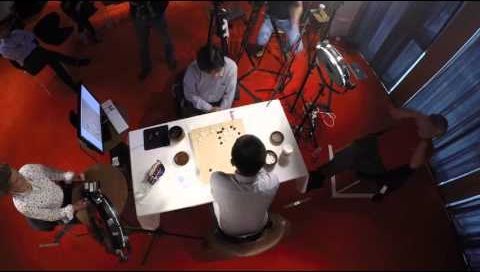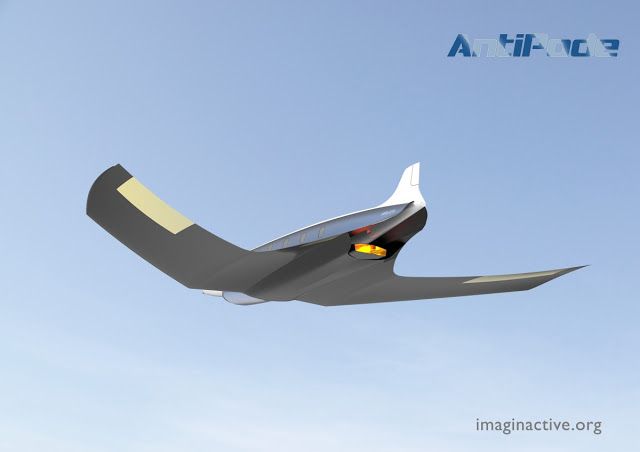Page 11812
Jan 27, 2016
Google DeepMind: Ground-breaking AlphaGo masters the game of Go
Posted by Julius Garcia in categories: business, computing, entertainment, information science, robotics/AI

In a paper published in Nature on 28th January 2016, we describe a new approach to computer Go. This is the first time ever that a computer program “AlphaGo” has defeated a human professional player.
The game of Go is widely viewed as an unsolved “grand challenge” for artificial intelligence. Games are a great testing ground for inventing smarter, more flexible algorithms that have the ability to tackle problems in ways similar to humans. The first classic game mastered by a computer was noughts and crosses (also known as tic-tac-toe) in 1952. But until now, one game has thwarted A.I. researchers: the ancient game of Go.
Continue reading “Google DeepMind: Ground-breaking AlphaGo masters the game of Go” »
Jan 27, 2016
Airbus & OneWeb Create OneWeb Satellites Company
Posted by Klaus Baldauf in categories: satellites, space, transportation

Truly beautiful stuff! How far we’ve come from going to a dimly lit, coin op arcade filled with venerable games like PAC-Man and Afterburner! The Singularity accelerates every second, of every minute, of every hour, of every day,. Being alive in this era of progress is truly a gift.
This is “Animation/FX Reel” by blurstudioinc on Vimeo, the home for high quality videos and the people who lovethem.
Jan 27, 2016
In Major AI Breakthrough, Google System Secretly Beats Top Player at the Ancient Game of Go
Posted by Julius Garcia in categories: entertainment, robotics/AI
As recently as this month, top AI experts outside Google questioned whether such a victory could be achieved anytime soon.
Jan 27, 2016
Charles Bombardier has improved hypersonic design able to go 24 times the speed of sound with counterflow air cooling
Posted by Klaus Baldauf in category: transportation
The Antipode is the second hypersonic jet by Canadian inventor and engineer, Charles Bombardier. The Antipode design is a 10-seat private jet that uses rocket boosters to take off, detaches the rockets at altitude of 12km, fires its hypersonic engines to hit speeds of Mach 24 (20,000 km/h), and gets you from New York to London in 11 minutes.
To cool the jet from the heat of hypersonic travel.
It would channel some of the air, flowing at supersonic speed, through a nozzle located on the nose of the aircraft, producing a counterflowing jet of air that would induce LPM (a novel aerodynamic phenomenon called ‘long penetration mode), which would in turn lead to a drop in surface temperature due to aeroheating and a reduction of the shockwave and noise caused by breaking the sound barrier.
Jan 27, 2016
A breath of fresh air in Canada — By Richard Branson | Virgin
Posted by Odette Bohr Dienel in categories: human trajectories, policy
“I was fortunate enough to meet Prime Minister Justin Trudeau recently. Seeing a young, exciting Prime Minister and his colleagues in action was a breath of fresh air. At Davos, where too many people focus on the negatives, he was optimistic on topics ranging from drug policy to climate change to diversity.”
Jan 27, 2016
New record in nanoelectronics at ultralow temperatures
Posted by Karen Hurst in categories: computing, electronics, quantum physics
Another Quantum Breakthrough through ultra- low temp nanoelectronics- Sub-millikelvin nanoelectronic circuits and is another step on the way to develop new quantum technologies including quantum computers and sensors.
The first ever measurement of the temperature of electrons in a nanoelectronic device a few thousandths of a degree above absolute zero was demonstrated in a joint research project performed by Lancaster University, VTT Technical Research Centre of Finland Ltd, and Aivon Ltd.
The team managed to make the electrons in a circuit on a silicon chip colder than had previously been achieved.
Continue reading “New record in nanoelectronics at ultralow temperatures” »
Jan 27, 2016
Super-fast computing breakthrough: Light-based optical chips possible with plasmonic cooling
Posted by Karen Hurst in categories: computing, quantum physics

And, another breakthrough for Quantum by Russian Scientists. Russian scientists have developed a new way to solve a key problem with cooling plasmonic components, which makes optical chips and super-fast light-based computers a definite possibility. https://lnkd.in/b9kuiSa
Russian scientists discover how to cool plasmonic components to make light-based transistors possible.
Jan 27, 2016
Wise.io Introduces First Intelligent Auto Reply Functionality for Customer Support Organizations
Posted by Karen Hurst in categories: business, finance, robotics/AI, transportation
Wise Autoresponse for your Customer Support Call Center needs — I do know that one of the large financial institutions in NYC announced in Dec. that they were replacing their tier 1 & tier 2 support with AI this summer.
BERKELEY, CA — (Marketwired) — 01/27/16 — Wise.io, which delivers machine learning applications to help enterprises provide a better customer experience, today announced the availability of Wise Auto Response, the first intelligent auto reply functionality for customer support organizations. Using machine learning to understand the intent of an incoming ticket and determine the best available response, Wise Auto Response automatically selects and applies the appropriate reply to address the customer issue without ever involving an agent. By helping customer service teams answer common questions faster, Wise Auto Response removes a high percentage of tickets from the queue, freeing up agents’ time to focus on more complex tickets and drive higher levels of customer satisfaction.
“Wise Auto Response has dramatically eased the burden on our support agents, allowing us to reply to half of all tickets automatically,” said Francesca Noli, VP of Marketing at Product Madness. “Now we are able to focus agent attention on more complex, customer-facing issues like payment problems, which have a direct impact on our bottom line. Wise gives us the best of both worlds: it has the power of an artificial intelligence system like Watson, along with the lightweight integration we need to successfully apply machine learning to our service operations quickly, easily and cost effectively.”
Wise Auto Response identifies common customer inquiries that can be responded to with a high level of confidence — such as password resets and basic product functionality, or standard “thank you” email templates that don’t require hands-on follow up — and automatically responds without the need for any manually written business rules. The new functionality complements the current suite of predictive applications offered by Wise.io, including Wise Routing, which automates the support ticket triage process, and Wise Recommended Response, which provides a ranked shortlist of appropriate macros and templates for each new customer inquiry.













